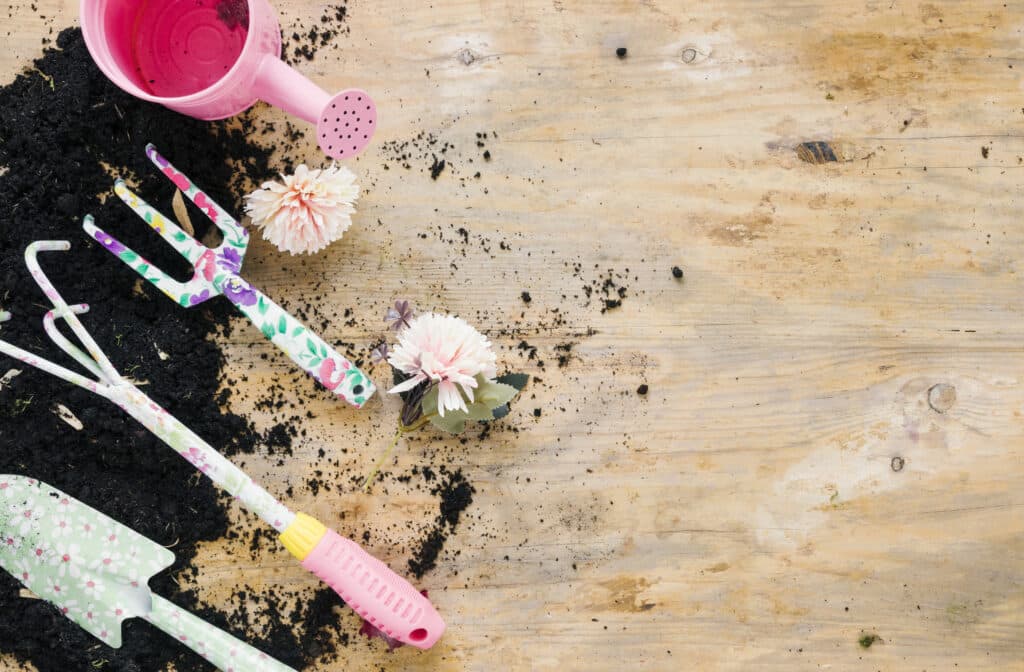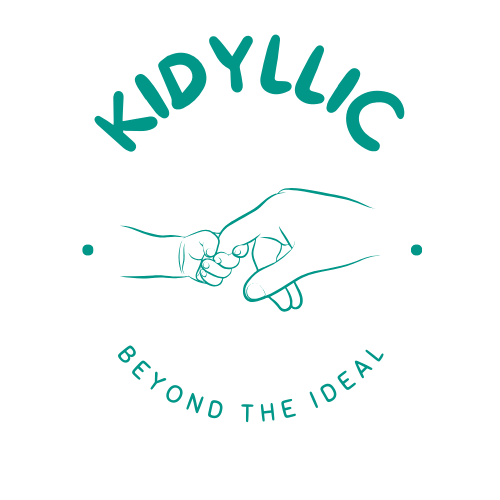
Table of Contents
What Is a Mud Kitchen and Why Do Kids Love It?
Imagine a world where your child is the head chef of an outdoor restaurant, whipping up mud pies, stone soups, and leaf salads. That’s the magic of a mud kitchen! A simple outdoor play area designed for messy, imaginative play, a mud kitchen lets kids explore nature, experiment with textures, and embrace unstructured creativity.
I first discovered the idea when my son, Yas, started bringing home pockets full of rocks and dirt from the playground. Instead of fighting the mess, I decided to embrace it—and that’s how our own DIY mud kitchen was born.
The Benefits of a Mud Kitchen for Child Development
Learning Through Play: Motor Skills, Imagination & Independence
A mud kitchen isn’t just about getting dirty (though let’s be honest, that’s a big part of the fun). It fosters crucial developmental skills:
- Fine motor skills: Scooping, stirring, pouring, and patting all strengthen little hands and fingers.
- Cognitive development: Experimenting with textures, colors, and quantities builds early STEM skills.
- Imaginative play: Kids transform into chefs, potion-makers, or even scientists with their homemade concoctions.
A study from the Journal of Play in Early Childhood found that sensory play enhances problem-solving skills and social cooperation among young children. Research also suggests that tactile engagement with natural materials can boost neural connectivity, reinforcing early cognitive functions. Additionally, children who frequently engage in unstructured play, such as mud kitchens, tend to develop better emotional regulation and resilience. This type of setting allows them to experiment freely, fostering both curiosity and a love for nature-based learning.
A Sensory Wonderland for Endless Exploration
If you’ve ever watched a toddler run their hands through mud, you know how deeply satisfying it can be. The sensation of cool, squishy mud slipping through their fingers isn’t just fun—it’s a rich sensory experience that engages multiple senses at once. A mud kitchen provides a safe and structured way for kids to explore textures, temperatures, and even smells in a fully immersive environment. Studies show that hands-on sensory play like this can help improve a child’s emotional resilience, reducing stress and increasing overall well-being. It also encourages problem-solving as children experiment with how different materials interact, like mixing dry dirt with water to find the perfect consistency for mud pies.
Plus, for parents like me who are often trying to reduce screen time, a mud kitchen is an excellent way to encourage outdoor, hands-on play. It transforms backyard time into a meaningful, low-tech experience where kids can immerse themselves in creativity. Unlike passive activities, a mud kitchen requires active participation, engaging both mind and body. It also fosters teamwork—siblings and friends collaborate on recipes, take turns as chefs, and even develop storytelling skills as they create their own playful scenarios. More than just play, it becomes a learning hub where children experiment with nature, develop patience, and gain independence, all while playing in the fresh air.
How to Create the Perfect Mud Kitchen for Your Child
Must-Have Elements for an Engaging Setup
A great mud kitchen doesn’t need to be fancy. Here’s what you need to get started:
- A sturdy play surface: An old table, wooden pallets, or even a large tree stump.
- Pots, pans, and utensils: Gather old kitchen items from home or thrift stores.
- Mud and water access: A simple bucket or an outdoor tap will do the trick.
- Extras for creativity: Stones, leaves, flowers, and twigs for “ingredients.”
For our family, we used an old wooden bench, added a few plastic bowls, and let nature take care of the rest. Yas and Joud immediately turned it into their personal café, serving up dirt smoothies and leaf pizzas! They took turns being the chef and the customer, negotiating « prices » with pebbles and leaves. Soon, their friends joined in, expanding the menu to include mud-brewed tea and sand-infused pastries. Watching them collaborate, invent new dishes, and giggle through their « tasting sessions » made me realize that this simple setup was more than just a play area—it was a foundation for teamwork, creativity, and even early math skills as they counted ingredients and took pretend orders.
DIY or Buy? Finding the Best Option for Your Family
Should you build or buy a mud kitchen? It depends on your budget and specially your DIY skills:
- DIY Mud Kitchen: A budget-friendly, hands-on project that allows for full customization to match your child’s interests. Whether using repurposed materials like old wooden pallets or adding unique features like a mini sink or chalkboard menu, a DIY mud kitchen can be as simple or elaborate as you like. Plus, building it together can be a bonding activity that teaches kids basic woodworking skills and problem-solving. It’s a fun weekend project that turns into a lasting outdoor play space.
- Pre-made Mud Kitchen: Available online with built-in sinks, shelves, and extra features like pretend stove burners or storage compartments, making them a convenient and time-saving option. Some models even include real working taps that connect to a garden hose, enhancing the water play experience. If you’re short on time or lack the tools for a DIY project, a pre-made mud kitchen can be an excellent choice to provide an instant, engaging play area for your child.
I personally opted for the DIY route, and while it wasn’t perfect, seeing my kids enjoy it made it 100% worth the effort.
Fun Mud Kitchen Activities and Play Ideas
Mud Recipes: From Magic Soup to Muddy Cakes
Need inspiration? Try these fun, messy ideas:
- Magic Mud Soup: Mix dirt, water, leaves, and flowers, then stir with a sturdy stick or spoon until it reaches the perfect « broth » consistency. For extra fun, encourage kids to add « seasonings » like crushed petals or bits of bark. You can even introduce small cups and spoons so they can serve their magical concoction to family members. To take it up a notch, let them create a « menu » with different mud soup variations, sparking creativity and role-playing skills.
- Stone Pancakes: Flattened mud patties shaped by little hands, decorated with « toppings » like pebbles, acorns, and tiny flower petals. Encourage kids to experiment with different sizes and shapes, layering small « cakes » to create mud pancake stacks. Add a drizzle of water or a sprinkle of sand for extra texture, and let them serve their creations as part of a pretend outdoor café!
- Dirt Cupcakes: Mud-filled muffin tins decorated with twigs, pebbles, and tiny flowers for an added artistic touch. Encourage kids to use leaves as cupcake liners or sprinkle sand on top for a « sugar dusting » effect. For an extra layer of creativity, they can mix different types of mud to experiment with textures, making each cupcake unique. Set up a pretend bakery and let them take orders from family members, enhancing both their social and imaginative play.
Role-Playing & Creativity: Turning the Kitchen into a Five-Star Restaurant
A mud kitchen isn’t just about cooking—it’s about storytelling. Encourage your child to:
- Open a “restaurant” and serve family members, complete with handwritten menus and imaginative dishes. Encourage them to take orders, set up a seating area with outdoor chairs, and even create a pretend cash register using pebbles or leaves as currency. This activity not only enhances creativity but also teaches basic math skills, social interaction, and responsibility as they « cook, » serve, and clean up their kitchen space.
- Pretend to be a scientist mixing potions, using different types of mud, leaves, and flower petals to create bubbling ‘elixirs’ and mysterious ‘tonics.’ Encourage kids to experiment with textures by adding sand, pebbles, or even a bit of food coloring to make their concoctions visually striking. Provide measuring cups and small bottles to introduce basic concepts of volume and chemistry while sparking their curiosity about nature and science.
- Create a “bakery” with leaf and mud pastries, complete with a makeshift display of ‘freshly baked’ mud cakes, twig breadsticks, and sand-dusted cookies. Encourage kids to name their creations, design price tags with chalk, and take turns being the baker and customer. Add small cups of water as ‘milk’ to enhance the role-playing experience, and let them practice counting change using pebbles as currency, reinforcing early math skills while having fun.
Tips for Maintaining and Keeping a Mud Kitchen Safe
Durable Materials & Easy Cleaning Hacks
Mud kitchens are meant to get messy, but a little upkeep helps:
- Choose weatherproof materials like treated wood, recycled composite, or heavy-duty plastic designed to withstand rain and sun exposure. choose materials that are naturally resistant to insects and moisture, such as cedar or teak, to prolong the life of your mud kitchen. Sealing wood with a non-toxic, child-safe outdoor finish can also add protection. If possible, elevate surfaces slightly to prevent water pooling and promote better drainage.
- Rinse tools regularly with warm water and a mild soap to avoid buildup and keep them safe for play. For stubborn dirt, use a small scrub brush or soak utensils overnight in a vinegar-water solution. Storing tools upside down in a drying rack can help prevent moisture buildup and prolong their lifespan.
- Store utensils in labeled bins or hanging racks to keep them organized and easily accessible. Consider using waterproof storage containers to protect them from the elements. Rotating tools occasionally can also keep play exciting and encourage kids to experiment with different utensils.
Safety First: How to Prevent Messes and Mishaps
- Supervise young kids closely to prevent them from eating mud (because let’s face it, they’ll try!). Engage them in conversations about safe play, explaining why mud is for creating and not for tasting. Providing alternative sensory materials like edible dough or colored rice can also redirect their curiosity while keeping the fun going.
- Set ground rules: Mud stays in the kitchen, not on the walls! Encourage kids to designate a ‘mud zone’ and establish cleanup routines, like rinsing hands and tools before coming indoors. Providing washable aprons or old clothes for playtime can also help minimize mess while still allowing them to enjoy their creativity freely.
- Check for hazards like sharp sticks, splinters, or any small objects that could be choking hazards. Regularly inspect the play area for broken tools, rusty metal, or moldy wood that could pose risks. Ensure that the mud and water sources are clean and free from contaminants to keep playtime safe and enjoyable.
FAQ: Everything You Need to Know About Mud Kitchens!
What Age Is Best for a Mud Kitchen?
Most kids enjoy a mud kitchen between ages 1 and 8. Younger toddlers love the sensory experience, while older kids create elaborate role-playing games.
Where Should I Set Up a Mud Kitchen?
A shaded outdoor area works best—near a garden hose for easy cleanup! If space is tight, a portable mud kitchen is a great alternative.
How Do I Keep My Child from Eating Mud?
It’s normal for toddlers to be curious! Teach them early on that mud is for play, not eating. You can also provide “clean” alternatives like edible playdough for younger kids.
How to Protect a Mud Kitchen from Weather Damage?
- Use a tarp or cover when not in use.
- Store metal utensils indoors to prevent rust.
- Choose durable materials like sealed wood.
Conclusion: Time to Get Messy!
A mud kitchen is more than just an outdoor play space—it’s a tool for creativity, exploration, and learning. Whether you build one from scratch or buy a ready-made version, the benefits for your child’s development are priceless.
Ready to set up your own mud kitchen? Let me know your best DIY hacks in the comments, and don’t forget to check out our activities and projects for more inspiration!
